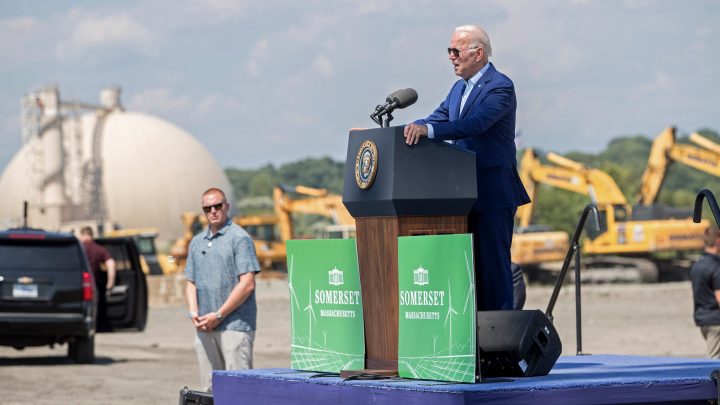
How is the White House shaping clean energy supply and demand?
How is the White House shaping clean energy supply and demand?

We love a good reference to Econ 101 here at Marketplace. And it’s no surprise that the concept of supply and demand made its way into the just-released “Economic Report of the President,” nearly 500 pages that give insight into the White House’s economic priorities.
One of those priorities? The clean energy transition and what the government’s role should be in tinkering with that basic economic concept: supply and demand.
In a growing U.S. economy that’s dependent on fossil fuels, the invisible hand just isn’t cutting it when it comes to addressing climate change, said Noah Kaufman, an economist with Columbia University.
“Future damages caused by greenhouse gas emissions,” he said. “Markets left to their own devices won’t capture those in prices, so we need policies in place to do that.”
And do it fast. Which is why the White House calls the energy transition toward net-zero emissions a “structural change.” And supply and demand can help us get there.
“You can either try to make the fossil fuel use more expensive through regulatory approaches, or you can try to make the alternatives to fossil fuels cheaper,” said Billy Pizer, incoming CEO at Resources for the Future.
The government has done the latter. It’s invested in renewable technology, research and infrastructure through things like tax credits that can boost supply.
“When I think about supply-side policies, I think about what are policies that can be put into place to incentivize these suppliers of electricity, suppliers of let’s say … electric vehicles, suppliers of, you know, and installers of heat pumps to do more of these activities?” said Akshaya Jha, a professor of economics and public policy at Carnegie Mellon University.
These are the kinds of incentives in the Inflation Reduction Act and Bipartisan Infrastructure Bill that are also concerned with demand, like boosting demand for batteries through tax credits.
Though, Jha said we should also think about reducing demand for energy.
“There are incentives in place to make your home more energy efficient, meaning you can use less energy to heat or cool the same amount,” he said.
Another market tool for addressing the energy transition — a carbon tax — still lacks political support.
There’s a lot happening in the world. Through it all, Marketplace is here for you.
You rely on Marketplace to break down the world’s events and tell you how it affects you in a fact-based, approachable way. We rely on your financial support to keep making that possible.
Your donation today powers the independent journalism that you rely on. For just $5/month, you can help sustain Marketplace so we can keep reporting on the things that matter to you.

















